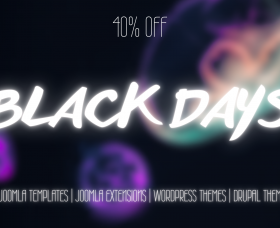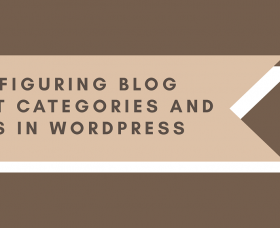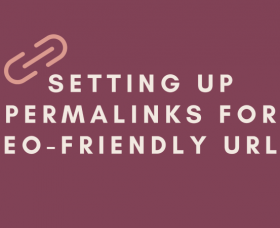How are emojis changing content practices in app promotion campaigns?

Emojis have become an inextricable part of the online world. Rarely do you scroll across a social media feed and not notice emojis popping up left, right, and centre. Conveying emotions through small graphic bytes has become the norm now.
While we may assume emojis are a purely social media-based phenomenon, their use goes beyond platforms like Facebook, Instagram, and more. Emoji use has even become prevalent in verticals like mobile app marketing.
As app development is simple now thanks to tools like AppMySite, anyone can go from WordPress to Android & iOS app in minutes. The main challenge lies in mobile app marketing and exploiting every little advantage to enhance app visibility and other related KPIs.
Emoji use may seem like a miniscule factor in app promotion, but the numbers tell a different story.
#1 - Emojis help bring greater push notification engagement
A study by Lean Plum on mobile app engagement shows people are 85% more likely to click through notifications that contain emojis.
Running a successful push notification campaign is extremely important for modern apps. Users have a lot of apps on their smartphones and cannot provide their attention to every app. Push notifications enable you to capture the attention of your users for a certain amount of time.
However, notifications only work if your users actually click through them and visit your mobile app. A low click-through rate (CTR) only means your users are ignoring your messages. Thus, you need to take a number of steps to optimize the CTR of your notifications.
Adding emojis could significantly help enhance your CTR. The numbers point to the same trend. However, it is important to simultaneously learn how to use emojis effectively. You cannot just start adding emojis and see an overall rise is user retention. It is important to match the emojis you’re adding with the copy of your notification messages.
One question you might ask is why emojis have such an impact on push notification CTR. It is best to view the entire practice of adding emojis to a marketing asset as a personalization exercise. Users may not have the time to read the copy you write for push notification campaigns. However, you can grab their attention with the right emojis.
#2 - Emails with emojis have a higher open rate
Adding emojis to your email can increase the open rate by 66%. Email marketing is an important part of mobile app promotion. Like push notifications, email marketing is also primarily used for enhancing user retention in the app marketing space.
Emails are largely seen as a professional and formal channel of communication. Adding emojis to your email blasts can help achieve two things simultaneously - stand apart amongst other emails and convey the tone of the email with a simple symbol.
Most email marketers refrain from adding emojis to their subject line and title. This represents a small window of opportunity. By adding emojis to your title, you can stand apart amongst other emails.
It is again important to add emojis strategically. Don’t add them indiscriminately because you then risk irritating your audience and forcing your main message to take a back seat. Think of it as a way to represent the tone of the email. It is also wise to run A/B tests to see which audience demographic reacts better to emojis.
#3 - Use of emojis correlates with low app churn rate
Apps that use emojis in their messages have 26% lower app churn than the ones who don’t.
This correlation may seem to lack basis on a preliminary reading. However, when we bring into account the higher engagement emojis bring in push notification campaigns and emails, the data point becomes much clearer.
Emojis are a way to tap into the instinctive nature of the end user. This is why they have such a big impact on retention mechanisms like push notifications and email campaigns. Emojis leverage moment marketing and make sure the audience is persuaded to perform an action.
The high level of engagement you can bring with emojis will naturally offset the other reasons behind app churn.
#4 - Change in App Store guidelines with respect to emoji use
App Store was not always open to emojis. Almost three years back, Apple used to reject apps that contained emojis in their metadata.
Things have changed now. Apple now allows developers to add emojis to their app listing and meta data on the App Store. However, developers are advised to use emojis in a controlled manner. It is thus best for developers to only add emojis in the app description on the App Store.
How do emojis work in normal app promotion campaigns?
We’ve already covered the impact emojis can have in specific areas of app marketing like push notifications and emails. The interesting question is whether we can expect the same impact in other areas of app marketing such as social media and search ads.
The only way to definitively know the answer is to try out emojis in a real campaign. Some brands have audiences that may not find emoji usage particularly engaging. Other brands can seamlessly fit into the emoji culture online. The trick is to identify your audience well.
In conclusion
App making tools like AppMySite have made complex development problems easy. Even ecommerce app development can be done without code now. An AppMySite user can convert WooCommerce to mobile app and launch a premium shopping app on multiple platforms.
This simply means app marketers must be prepared for more competition on all fronts. It is crucial for professionals in the field to exploit any advantage they can.This piece brings up real data to highlight the impact emojis can have on different app marketing verticals. While the signs are encouraging, marketers must remember to use emojis strategically. Indiscriminate addition of emojis to marketing assets will only fatigue the audience and reduce their overall impact.
Thank you!
Will be posted after admin approval.








